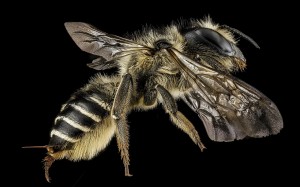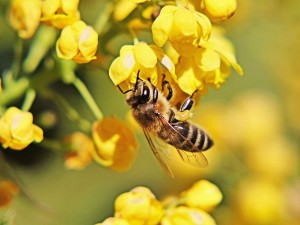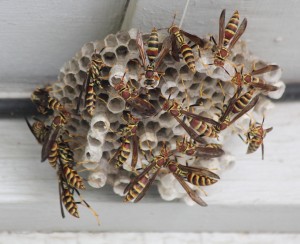 A perfect day can be ruined by one sting from an insect! While stinging insects are not generally life threatening or even extraordinarily dangerous (unless you have an allergy), dealing with a sting is certainly not much fun. In order to keep yourself and your family sting free, follow this guide to identify the pest, the nest, and the threat.
A perfect day can be ruined by one sting from an insect! While stinging insects are not generally life threatening or even extraordinarily dangerous (unless you have an allergy), dealing with a sting is certainly not much fun. In order to keep yourself and your family sting free, follow this guide to identify the pest, the nest, and the threat.
The Pest And Threat
Some stinging insects are more dangerous than others. A professional will be able to determine what stinging insect is what, but this guide will attempt to help as well.
- Bumble bees: fuzzy, about ¼ to 1 inch in size and have black and yellow markings. Their nests are built out of pollen clumps on the ground or sometimes in abandoned mouse nests. These insects are generally considered helpful since they pollinate plants and flowers.
- Carpenter bees: look similar to bumble bees, but have largely bare and shiny abdomens. These bees do not build nests, but bore into wood, especially decaying or weathered wood. Though they do not have a stinger, male carpenter bees can be territorial and aggressive. Females rarely sting, but these insects can do considerable structural damage.
- Honey bees: orangish brown and about ½ to 5/8 inch in size. They live in mass colonies since they are social. These bees are defensive, not aggressive, and only attack if they feel there is a threat.
- Yellowjacket: between 3/8 and 5/8 inches with a yellow and black pattern. Their nests can grow to be the size of basketballs and are constructed from paper carton and have a honeycomb shape. Nests could be in garages or corners of porches or on the ground or bushes as well. While they are generally slow to sting, they will if they feel threatened.
- Paper wasp: brownish with yellow or red markings. Their nests look similar to paper and generally hang from something like tree branches, door frames and porch ceilings. Paper wasps are very likely to sting if their nest is touched.
The Nest
 One way to keep your family safe is to do regular walk-throughs around your property looking for nests. Look carefully under overhangs, leaves, and the undersides of porches and decks. You also want to check shrubs, bushes, trees, and any other structures like sheds. If you come across a nest, you should not try to remove it on your own. The colony might become agitated and aggressive and attack en masse, which is when a sting goes from being a nuisance to becoming extremely dangerous. A professional will be able to safely remove and/or relocate the nest.
One way to keep your family safe is to do regular walk-throughs around your property looking for nests. Look carefully under overhangs, leaves, and the undersides of porches and decks. You also want to check shrubs, bushes, trees, and any other structures like sheds. If you come across a nest, you should not try to remove it on your own. The colony might become agitated and aggressive and attack en masse, which is when a sting goes from being a nuisance to becoming extremely dangerous. A professional will be able to safely remove and/or relocate the nest.
Attic Solutions is fully licensed and insured and prepared to remove the bees from your property, regardless of scope of infestation.
Don’t wait to get stung; call Attic Solutions today. We will help!





